Engaging Nonfiction Reads for Eight-Year-Olds
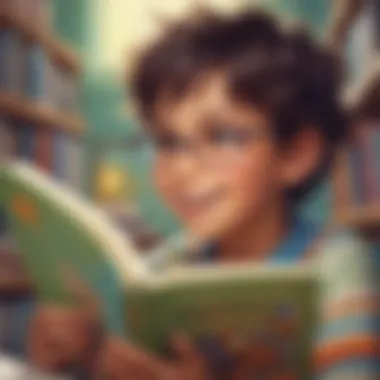
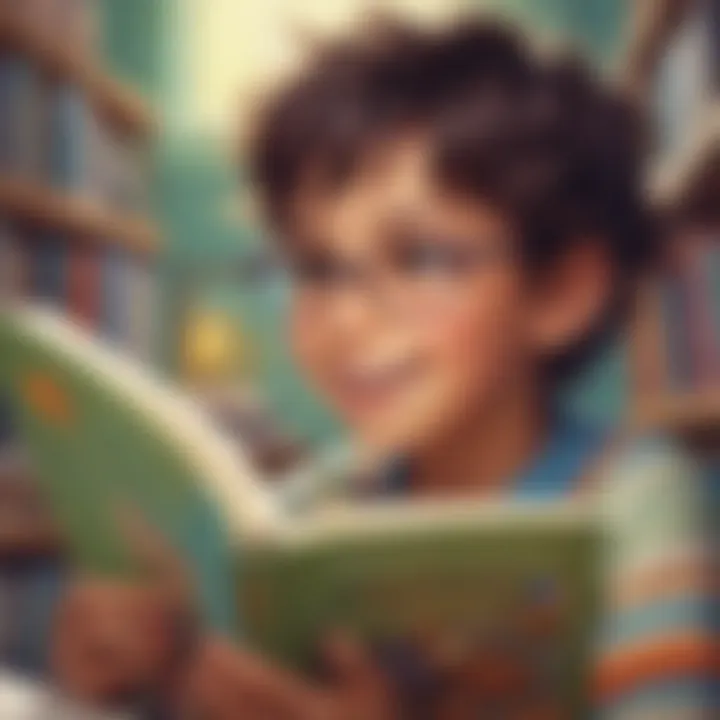
Intro
Reading nonfiction books at a young age opens a treasure chest of knowledge for children, especially eight-year-olds who are just starting to hone their critical thinking skills. This age marks a pivotal moment in cognitive development; kids are eager to understand the world around them. Nonfiction literature enhances their natural curiosity, offering them the chance to explore subjects like science, history, technology, and art through engaging narratives.
By diving into the rich world of factual storytelling, children learn to ask questions, seek out new information, and develop a more profound sense of empathy and understanding. In this article, we aim to inform not only parents and caregivers but also educators about selecting the right nonfiction books for eight-year-olds. The goal is to create a solid foundation that nurtures an appreciation for learning and encourages a lifelong love for reading.
With careful consideration of themes, attributes, and methodologies, this article provides a roadmap for fostering young readers' analytical abilities and deepening their engagement with the vast landscape of knowledge.
Creative Activities
Encouraging creativity can significantly enrich the learning experience from nonfiction books. Interactive activities can help eight-year-olds digest the information they read while having fun. Here are a few ideas:
Craft Ideas
- DIY Science Experiments: Simple experiments that relate to the science topics in books, such as creating a volcano from baking soda and vinegar.
- Create a Timeline: Using string and sticky notes, children can create visual timelines of historical events they’ve learned about.
- Native Animal Masks: After reading about animals, kids can make masks out of cardboard to role-play as their favorite creatures.
Step-by-Step Guides
- Volcano Experiment:
- Timeline Creation:
- Animal Masks:
- Gather materials: a small container, baking soda, vinegar, food coloring.
- Place the container on a tray to catch overflow.
- Fill the container halfway with baking soda, add food coloring, and then slowly pour in the vinegar.
- Watch the eruption!
- Decide on a topic, such as the development of the telephone.
- Research key events and write them on sticky notes.
- Arrange them along the string in chronological order.
- Choose an animal from a book.
- Cut out a cardboard mask shape and paint it.
- Add ears, whiskers or other features using craft supplies.
Educational Value
Engaging in these activities allows children to solidify what they’ve learned and apply it creatively, enhancing memory retention. It transforms learning into a hands-on experience, promotes teamwork in group activities, and inspires them to explore further.
Fun Quizzes
Quizzes can be a fantastic way of assessing knowledge in a fun format. They reinforce what kids have learned from nonfiction books and keep the excitement alive.
Quiz Topics
- The Solar System
- Animal Habitats
- Great Inventors and Their Inventions
- Famous Historical Figures
Question Types
- Multiple Choice: Options for kids to select the correct answer, which aids in recognizing the right information.
- True/False: Statements that encourage critical thinking about factual accuracy.
- Fill in the blanks: Completing sentences based on what they read, improving recall.
Knowledge Reinforcement
Through quizzes, kids not only test their memory but also strengthen their understanding of various subjects. They can take what they've learned and apply it in a low-pressure setting that fosters confidence.
Fact-Based Articles
Enriching children’s knowledge through fact-based articles can be one of the most rewarding experiences. These articles distill complex subjects into digestible nuggets.
Topics
- Ecosystems and Biodiversity
- The Human Body
- World Cultures and Traditions
- Technology and Its Evolution
Engaging Content
Well-written articles present information in a straightforward manner, often complemented with illustrations, charts, and anecdotes. This can spark interest and make details stick in young readers' minds, allowing them to grasp concepts easily.
Understanding Nonfiction for Children
Grasping the essence of nonfiction in a child's life is somthing that needs careful thought. Nonfiction is not just about facts; it’s a pathway to understanding the world around them. As children embark on their reading journeys, exposure to factual literature can play a vital role in shaping their perception and cognitive abilities.
Definition of Nonfiction
Nonfiction refers to texts that provide factual information about real-world events, people, and concepts. Unlike fiction, which tells imaginative stories, nonfiction presents facts, statistics, and real-life accounts. For eight-year-olds, nonfiction can range from simple biographies, explaining the lives of notable figures, to exploratory texts about nature, history, and science. It's a window that lets children peek into the reality of life, fostering an appreciation for knowledge and curiosity.
In essence, nonfiction serves as a reliable guide, offering clarity and insight. Think of it as a sturdy bridge, enabling young readers to traverse the vast landscape of information that surrounds them. At this age when their thirst for knowledge is voracious, selecting engaging nonfiction can spark endless discussions and inquiries.
Importance of Nonfiction in Early Learning


The significance of introducing nonfiction to children during their formative years cannot be understated. Nonfiction books, when woven into reading habits, nurture a child's ability to think critically. As they digest facts and figures, kids develop analytical abilities, learning how to interpret information and ask insightful questions. Here are some key benefits of incorporating nonfiction into early learning:
- Enhances Comprehension Skills: Engaging with nonfiction allows children to understand complex ideas simply. They learn to break down information and make sense of it in ways that fiction may not always facilitate.
- Encourages Curiosity: When children read factual material, they often wonder about the world. This not only encourages them to ask questions but also promotes a desire to seek answers - a foundational step in scientific learning.
- Connects to Real-Life Experiences: Nonfiction books often relate to real-world phenomena, allowing children to see the relevance of what they read in everyday life. For instance, a book about the solar system can tie into classroom discussions or even outdoor stargazing.
Key Features of Nonfiction Books
The realm of nonfiction books for children is a rich tapestry woven with diversity and educational utility. Nonfiction isn't merely about facts; it's about engaging young minds and enhancing curiosity. To make the most of this category, understanding its key features is paramount. Without these critical components, a nonfiction book might not resonate with young readers, potentially causing disengagement. Each feature plays a distinct role in not just capturing interest but also fostering a lifelong love for learning.
Age-Appropriate Language
When it comes to nonfiction books aimed at eight-year-olds, age-appropriate language cannot be overlooked. This means choosing words and sentence structures that align with the reading skills typically found at this developmental stage. The language must be simple yet engaging, allowing a child not just to understand, but to connect with the content. For example, instead of stating, "The phenomenon of evaporation occurs when water molecules gain energy," one might say, "When the sun shines on water, it can turn into invisible steam and rise into the air."
Employing such relatable language helps demystify complex ideas while making the reading experience enjoyable. On top of that, it caters to children who might not yet have a strong vocabulary, ensuring they don't feel left out or frustrated. The right balance will foster confidence, encouraging kids to share what they've learned.
Illustrative Elements and Design
Visual appeal is a crucial descriptor of nonfiction books for kids. This is where illustrative elements and design come to the forefront. A well-designed book includes vibrant images, diagrams, and charts that reinforce the text. Far from being mere decorations, these elements enhance understanding. For instance, consider a book about marine life that features a colorful illustration of coral reefs alongside concise facts about each species that inhabits them.
Moreover, the layout matters—using clear headings, bold fonts for key terms, and sidebars for interesting tidbits keeps the reading experience dynamic. It turns pages into adventures, allowing young readers to explore the material visually. One should never underestimate the power of a good illustration; it often ignites the imagination, leading to questions and further exploration.
Structured Formats
In terms of user experience, structured formats in nonfiction are essential. Books should ideally adopt clear organizational structures, from table of contents to chapter breaks that aid navigation. Whether it’s a straightforward narrative, a Q&A style, or even thematic sections, structure serves multiple roles.
For instance, consider a science book that’s broken down into segments like Animals, Plants, and Earth Sciences. Each segment could have its own introduction followed by fun facts, experiment ideas, and quizzes. This structured approach grants children the freedom to pick and choose, diving into subjects that most intrigue them without feeling pressure to consume every word.
Structured formats acts as a roadmap for readers who may feel overwhelmed by too much information. They promote an active reading experience, encouraging pause and reflection rather than passive absorption.
"Choose books that inspire questioning, excitement, and wonder.
Benefits of Reading Nonfiction
Reading nonfiction isn't just a pastime for kids; it’s a gateway to understanding the world in all its variety and complexity. For eight-year-olds, developing an appetite for factual literature helps them make sense of the great big world out there. The benefits are expansive, covering crucial areas of cognitive and emotional growth.
Enhancing Critical Thinking Skills
Nonfiction books challenge children to think beyond the basics. When kids immerse themselves in factual narratives, they encounter real issues and scenarios that often do not have straightforward answers. This engagement stimulates their critical thinking abilities, prompting them to analyze, evaluate, and compare information. For instance, a book about ecosystems can lead a child to ponder questions such as, "What would happen if one species disappeared from its habitat?" Such inquiries encourage kids not simply to absorb information passively but to interact with and assess it thoughtfully.
"Critical thinking is like a muscle, it gets stronger the more you use it."
Building Knowledge Across Disciplines
Reading nonfiction brings a wealth of knowledge from various fields into an eight-year-old's realm. Whether it's biology, history, or technology, nonfiction serves as a bridge connecting different areas of interest. For example, an explorative book about space may inadvertently introduce concepts from physics, geography, and even storytelling about ancient explorers. This interconnectedness fosters a holistic understanding of subjects rather than isolating them into separate boxes. Kids learn that knowledge is versatile and often overlaps, nurturing a well-rounded intellect.
Fostering a Love for Facts
Numbers, data, facts—these elements can sometimes intimidate young minds. However, interesting and engaging nonfiction can transform this perception. Books filled with captivating illustrations and lively narratives can turn facts into fun. For instance, books about dinosaurs often include fascinating trivia that can ignite a child’s passion for learning. When kids are presented with cool finds, like how big a T-rex really was or what it ate, they start to see facts in a positive light rather than as mere statistics. This enthusiasm is essential for lifelong learning and critical to shaping curious, informed individuals.
In sum, developing a relationship with nonfiction at an early age lays a foundation that benefits children throughout their educational journey. As they dive into different topics, they not only gather facts but also hone the ability to think critically, connect knowledge across disciplines, and appreciate the beauty of truth.
Popular Genres of Nonfiction for Eight-Year-Olds
When it comes to nonfiction books for eight-year-olds, selecting the right genre can make all the difference. At this age, children are naturally curious, eager to understand the world around them. This is where nonfiction shines, offering a treasure trove of facts and stories that can capture their imagination while educating them. Each genre offers a unique angle of exploration, fostering various interests and skills that benefit young readers. Below are some of the popular genres that resonate with eight-year-olds, along with insights into what makes each one compelling.
Biographies and Autobiographies
Biographies and autobiographies can serve as windows into the lives of people who made their mark on the world. Whether it’s a renowned scientist or an inspiring artist, young readers often find motivation in the journeys of others. These books not only present achievements but also highlight the challenges faced and how individuals overcame obstacles.
- Engagement: Kids connect with stories of real-life heroes. They can see bits of themselves in these narratives, which may inspire their confidence and aspirations.
- Empathy: Understanding someone else’s life can foster empathy, helping children appreciate diverse backgrounds.
- Moral Lessons: Many biographies come with moral lessons. A tale of perseverance, for instance, can teach valuable life skills.
"A biography isn’t just a chronology of events; it’s a journey through the tapestry of someone’s life, revealing hopes and failures alongside triumphs."
Science and Nature
The world of science and nature is astonishing; it reveals the intricate systems that govern life on Earth. Books in this genre often blend facts with stunning imagery, taking children on journeys that explore ecosystems, weather, animals, and the wonders of space.
- Hands-On Learning: Connecting facts with real-world examples helps kids make sense of what they’re reading. A book about dinosaurs can lead to visits to museums, sparking even further curiosity.
- Encouraging Questions: Science books often stimulate inquiry. A child might come across a concept that sparks a question leading them to further investigations or experiments.
- Environmental Awareness: Understanding the science behind our planet can cultivate a sense of stewardship, encouraging children to appreciate and protect their environment.
History and Culture
History and culture are pivotal in helping children understand the fabric of society. These books introduce kids to various civilizations, traditions, and significant events that shaped our world.
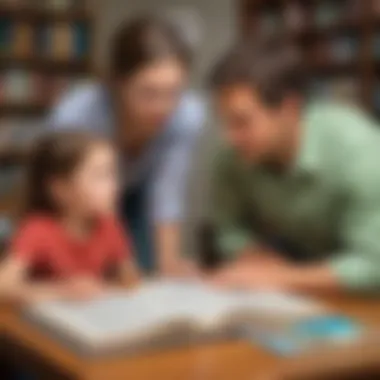
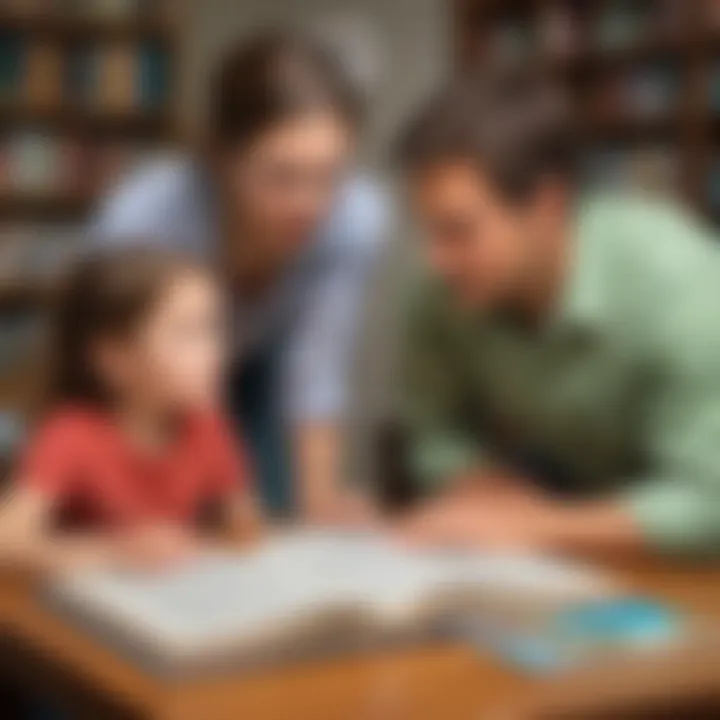
- Contextual Learning: Learning about history promotes context. Children can better understand the present by recognizing patterns and events in the past.
- Celebrating Diversity: Through cultural explorations, children gain insights into different customs and beliefs, promoting inclusivity and appreciation for diversity.
- Timing and Influence: Understanding landmarks in history paints a bigger picture of societal evolution, highlighting how various elements impact each era.
How-To and DIY Books
How-to and DIY books are the perfect gateway for hands-on learning. From crafting projects to simple science experiments, these texts encourage kids to roll up their sleeves and create something tangible.
- Skill Development: These books serve as guides, teaching children new skills ranging from cooking to building, empowering them in a practical way.
- Creativity: Engaging in DIY projects enhances problem-solving abilities as children navigate challenges during the creation process.
- Satisfaction in Creation: Completing a project offers a sense of achievement. It reinforces that with dedication and effort, they can bring their ideas to life.
In all, these various genres of nonfiction offer a broad spectrum of knowledge and excitement. They can cultivate interests that last a lifetime, paving the way for a well-rounded understanding of the world. By diving into these books, eight-year-olds can embark on discovery journeys that not only inform but also inspire.
Noteworthy Nonfiction Titles
Exploring nonfiction titles for eight-year-olds is like unearthing hidden treasures. This age group is at a developmental stage where their curiosity is boundless, and their ability to grasp complex ideas is rapidly evolving. Nonfiction books provide a bridge between engaging narratives and educational insights, allowing young readers to experience learning in a captivating way. These titles not only entertain but also serve as valuable resources, fostering a love for knowledge and understanding of the world around them.
Engaging Science Books
Science books tailored for this age range often draw in young minds with stunning visuals and relatable content. Books like The Magic of Reality by Richard Dawkins present scientific concepts in an accessible manner, combining storytelling with factual evidence. This approach helps demystify challenging topics and engage kids in a dialogue about the natural world.
These engaging science texts might feature:
- Vivid illustrations that spark imagination.
- Interactive elements, such as experiments or questions for reflection, promoting hands-on learning.
- Fun facts to keep young readers intrigued.
Reading these science books can significantly enhance a child's critical thinking skills. With each turn of the page, they learn not just to absorb information but also to question and explore further.
Captivating Historical Accounts
Delving into history can be a thrilling pursuit for eight-year-olds, especially when the stories are tailored to be relatable. Books like Who Was Anne Frank? by Janet B. Pascal bring historical figures to life. Such titles allow children to connect emotionally with the past, paving the way for a deeper understanding of societal changes and the contributions of remarkable individuals.
When selecting historical accounts for children, look for:
- Personal narratives that illustrate broader themes through individual stories.
- Contextual backgrounds, providing a sense of time and place without overwhelming detail.
- Diverse perspectives, ensuring representation from various cultures and communities.
This exploration of history offers an opportunity not just to learn dates and events but also to engage in discussions about morality, ethics, and community.
Inspiring Biographies
Biographies hold a special place in the realm of nonfiction, particularly for young readers. Titles like Malala's Magic Pencil by Malala Yousafzai provide snapshots of extraordinary lives, narrated in a way that resonates with children. These stories can act as powerful motivators, showing kids their potential to impact the world positively.
Inspiring biographies for eight-year-olds often feature:
- Relatable struggles and triumphs, encouraging empathy and resilience.
- Inspirational messages that promote self-belief and confidence.
- Illustrated profiles that maintain engagement and enrich the reading experience.
These books help to normalize the challenges faced by influential figures and inspire young readers to pursue their own dreams despite obstacles.
Reading about real people's lives can ignite passion and encourage young readers to strive for their own goals.
Overall, selecting noteworthy nonfiction titles helps cultivate an inquisitive mindset in children, preparing them for lifelong learning and exploration.
Selecting Nonfiction Books for Eight-Year-Olds
Choosing the right nonfiction book for an eight-year-old is not a simple task. It’s about more than just picking something off the shelf; it’s about opening doors to curiosity, knowledge, and new perspectives. Kids at this age are sponges, soaking up information from every corner of their world. This section focuses on the fundamental aspects that make selecting nonfiction books so essential.
Assessing Interests and Curiosities
Every child is unique in their passions and curiosities. When diving into nonfiction, it’s critical to first tap into their interests. If a child is mesmerized by dinosaurs, they’re likely to be more engaged with a well-written book about paleontology than a general science book. Parents and educators should encourage children to express what fascinates them.
One effective method is to have a discussion with the child about their favorite topics. Ask questions like:
- What do you want to learn more about?
- Is there something you saw or did recently that you want to explore further?
- Do you prefer stories about real people or adventures in nature?
By tailoring selections to these responses, parents and caregivers will find that the child is far more likely to engross themselves in reading. A book that aligns with a child’s interests is often a stepping stone to deeper understanding and enjoyment of the nonfiction genre.
Evaluating Educational Value
Not all nonfiction books are created equal. Some books prioritize elaborate illustrations over factual content, while others might present information in a dense or confusing manner. It’s crucial to pick books that not only engage but also enrich the mind of the young reader. Look for titles that have been vetted by educators or those that align with educational standards.
When assessing educational value, consider:
- Accuracy of Information: Does the book provide factual and up-to-date information?
- Depth of Content: Is it a superficial overview, or does it delve deeply into the subject?
- Reputation: What do reviews say? Books from established publishers often have stricter editorial processes and higher quality.
By having these metrics in mind, parents can better choose nonfiction books that yield knowledge, enhancing a child’s learning experience.
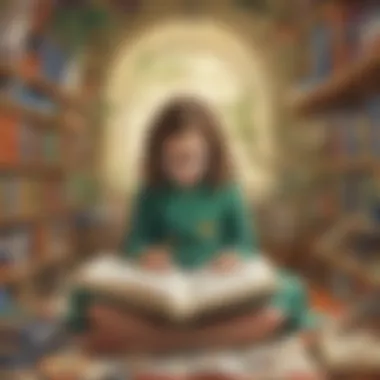

Considering Reading Level Appropriateness
Understanding the child’s reading level is essential. A book that is too easy might bore them, while one that is too challenging can lead to frustration. Look for books labeled as being suitable for an eight-year-old. An excellent approach is to sample a few pages before making a purchase or selection to see if the child can navigate the language and concepts.
It’s also helpful to consider whether the book includes:
- Glossaries or Definitions: If a text introduces complex vocabulary, do they help with definitions?
- Illustrations or Photos: Visual aids can make understanding easier and more enjoyable.
- Engaging Layout: Is the text complemented by bullet points, fun facts, or sidebars to break up the information?
Selecting appropriate reading levels not only boosts a child’s confidence but also fosters a more profound appreciation of nonfiction literature.
In summary, selecting nonfiction books for eight-year-olds is a journey filled with exploration. By understanding a child’s interests, evaluating the educational value, and ensuring reading level appropriateness, the right book can ignite a passion for learning that lasts a lifetime.
Encouraging Exploration Beyond the Pages
When we think about nonfiction books for eight-year-olds, we often get tangled up in the stories and facts themselves, but there's a lot more to it. Encouraging kids to explore beyond the written words is as crucial as reading the books. It's about taking the topics they learn and weaving them into their daily lives, sparking a thirst for knowledge that goes well past the pages of a book. This exploration reflects a deeper level of understanding, allowing children to connect what they read with the world around them.
This idea isn't merely about remembering facts, but about gathering experiences and insights that stick with them. It's about fostering an inquisitive mind that seeks out answers from various sources rather than just relying on a single text. Such a hopscotch through ideas and activities cultivates creativity and critical thinking, essential skills in any child's development.
Supplemental Activities and Resources
Once an eight-year-old has flipped through a nonfiction book, the journey should not just stop there. Parents and educators can step in with activities that expand on the themes found in these texts. For instance:
- Visit museums or nature centers: Immersing children in real-world contexts reinforces what they have learned. A child who read about dinosaurs can experience the joy of seeing fossils or exhibits that bring those massive creatures to life.
- Engaging experiments: If they’ve delved into science, simple experiments at home can be both a fun and educational way to put what they've learned into action.
- Community projects: Activities like gardening or recycling can align with themes from books about nature or environmental sciences, connecting facts to responsible action.
- Online resources and videos: Platforms like YouTube or educational sites can provide additional content that enriches understanding. For example, watching documentaries related to a historical figure can create a more rounded knowledge base.
Incorporating these kinds of activities enhances their engagement, turning them from passive recipients of information to active participants in their learning journey.
Discussing Themes and Ideas
After a child dives into a nonfiction book, discussing the themes presented can open new avenues of thought. It's one thing to read about climate change; it's another to sit down and discuss its implications and what they can do about it.
Start by asking simple but impactful questions:
- What did you like about the book?
- Did you learn something that surprised you?
- How can we relate this to what you see outside every day?
These discussions help solidify the knowledge gained and show children that their thoughts and opinions are valued. Sometimes, what’s most rewarding is seeing an eight-year-old connect different ideas. They might recall facts from a book on the solar system while discussing the weather, linking science and daily life effortlessly.
Through these conversations, many children develop a framework that encourages independent thinking. They start to articulate their ideas and question the information presented to them, which is a hallmark of critical thinking. Engaging them in discussions about these themes helps them see the broader picture, casting their understanding into a bigger context. This isn’t about memorization; it’s about making genuine connections.
“Knowledge is like a garden; if it is not cultivated, it cannot be harvested.”
Encouraging exploration beyond the pages ensures that learning is a dynamic process—one that extends into the world and shapes well-rounded, thoughtful individuals.
Future Trends in Nonfiction for Children
The landscape of nonfiction literature for eight-year-olds is rapidly evolving, reflecting changes in technology and society. Young readers today are exposed to a world that is increasingly digital, pushing authors and educational resources to rethink how they engage these curious minds. Understanding these trends is crucial, as they will not only shape children's reading habits but also enhance their learning experiences.
Incorporating Technology in Learning
Today’s students are digital natives; they navigate screens with ease. Therefore, nonfiction books that incorporate technology are gaining traction. These aren’t just traditional print formats anymore.
- Interactive eBooks: Many nonfiction titles now offer interactive features. Readers can tap on images to get supplementary information or watch videos that deepen their understanding of a topic. This interaction promotes engagement, making complex subjects more digestible. For example, imagine reading about the solar system and being able to zoom in on planets with a swipe.
- Augmented Reality (AR): This exciting tech layer brings pages to life. Picture a book on ancient Egypt where the pyramids pop out in 3D when viewed through an AR app. Such tools invigorate the reading experience, blending education with entertainment.
"The integration of AR in reading materials can elevate a child's learning potential exponentially, enriching their comprehension with multi-dimensional experiences."
Emerging New Themes
As society shifts, so do the themes in nonfiction literature. New discussions are emerging around topics that matter to today’s youth, encouraging them to think critically about the world around them.
- Environmental Awareness: Books focusing on climate change, conservation, and sustainability are becoming more prevalent. They inspire young minds to recognize the importance of caring for the planet and often provide practical steps kids can take.
- Social Issues: Nonfiction literature increasingly focuses on social justice, equality, and cultural diversity. By reading about various experiences and perspectives, children can build empathy and a nuanced understanding of the world. This genre enables conversations about tough topics in a digestible way.
- Health and Wellness: With a rise in awareness about mental health and well-being, nonfiction books that address emotional intelligence, resilience, and physical health are making waves. This trend helps equip children with the tools they need for personal development.
In summary, as we look toward the future of nonfiction for children, the incorporation of technology and the exploration of new relevant themes are shaping an enriched landscape. These trends not only promise to captivate young readers but also ensure they are better prepared to understand and engage with the world around them.
Epilogue
As we wrap up our exploration into nonfiction books suitable for eight-year-olds, it’s vital to underline the multifaceted benefits these narratives provide. Delving into nonfiction allows children to gain not just knowledge, but also develop crucial skills that aid in their overall growth. By engaging with factual content, children sharpen their critical thinking abilities; this means they learn to analyze information, discern facts from opinions, and understand context. These skills are not just applicable to academics but also useful throughout life.
Summary of Insights
The insights gathered throughout this article highlight the importance of introducing young readers to nonfiction literature. We’ve seen that nonfiction genres can captivate their imaginations while feeding their thirst for knowledge. Notably, books across various subjects, ranging from history to science, serve to pique their interests and drive them to ask questions. This curiosity is, perhaps, one of the greatest gifts we can cultivate in a child. Furthermore, by choosing age-appropriate and richly illustrated titles, parents and caregivers can create an engaging reading environment that stimulates discussion and exploration.
In addition to understanding the thematic categories, we’ve touched on how to select the right titles based on individual interests and reading levels. Ensuring that children encounter materials that resonate personally cultivates a meaningful connection with reading that often extends beyond their current age.
"Books are a uniquely portable magic." - Stephen King
Encouragement for Continued Learning
To foster a lasting love for learning, it’s essential that we encourage children to keep exploring even after they’ve finished a book. Here are some ways to maintain that spark of curiosity:
- Discuss Themes and Ideas: After reading, sit down with them and have a chat about the themes they encountered. Ask questions that provoke thought and discussion.
- Engage in Related Activities: Explore projects related to the content of the book. If they read about space, maybe a trip to the planetarium or a science experiment at home can bridge the knowledge gap and make learning more interactive.
- Promote Further Reading: Recommend additional books that expand on their interests. This gives them the agency to choose their next read, fostering independence.
By keeping the door open for conversation and exploration, we reinforce that learning is an ongoing adventure. With each nonfiction book they read, they embark on new journeys, each filled with facts, stories, and wonders of the real world. Encouraging this habit enables them to see books as a source of endless knowledge, which is invaluable as they progress throughout their educational journey.







